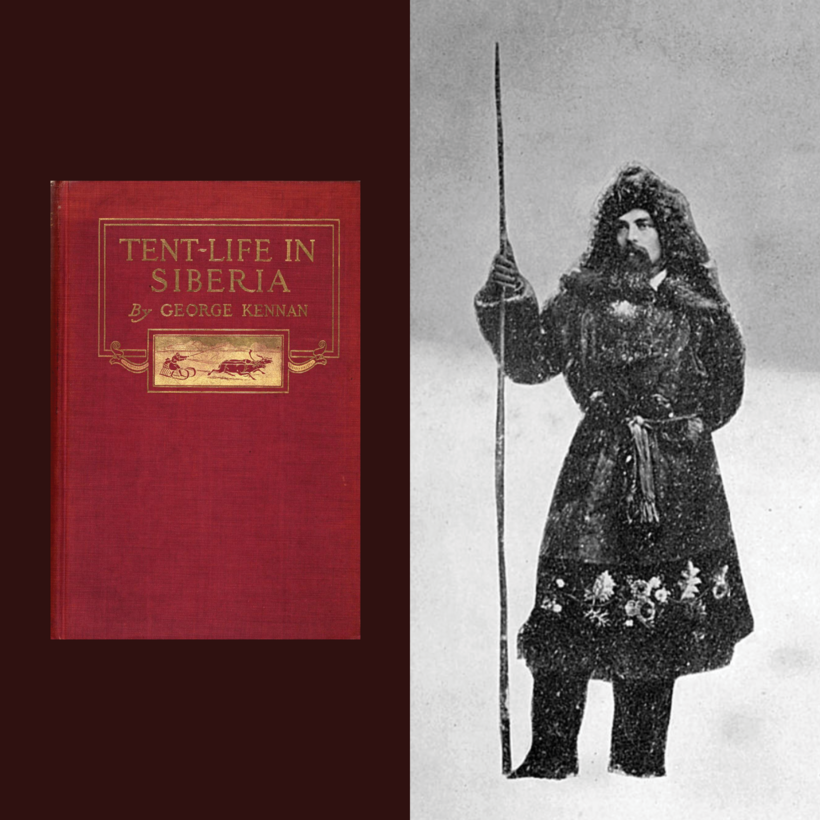In 1876, Walter P. Phillips, the manager of the Associated Press’s Washington office, offered George Kennan, who was then in his early 30s, the job of covering the U.S. Supreme Court. Kennan had written an acclaimed book, Tent Life in Siberia, about the three years he spent exploring the region’s northeast. But he declined the offer, saying he had no legal experience. “Well, you could not know less than the man currently in that job,” replied Phillips. “And you have the affirmative advantage that you know how to write.” Kennan took the job.
Kennan’s writing talent was an unexpected and delightful discovery when I began researching my book Into Siberia. While his Supreme Court reporting drew praise from every justice, Kennan worked in genres ranging from exploration to investigative journalism to war reporting.
In 1865, at age 20, Kennan joined a Russian-American expedition to map a route for a trans-Siberian telegraph. He was ordered to lead a winter dog-sleigh rescue mission to find fellow telegraph-line explorers stranded near the Arctic Circle, which took him onto the frozen tundra. “Day after day the eye rests upon the same illimitable expanse of storm-drifted snow, and night after night the traveler camps in an utter solitude, over which seems to brood the mournful silence of universal death,” he said in a speech to the American Geographical Society. “The world which you have left, with all its cares, strife, and busy activity, fades away into the unreal imagery of a dream; and you seem removed to an infinite distance from all the interest and occupations of your previous life.”
In Siberia, Kennan discovered that there is “no pity, love, justice, or mercy in all the universe outside the heart of man.” Despite his strict religious upbringing, he began questioning God’s role in the universe.
“Night after night the traveler camps in an utter solitude, over which seems to brood the mournful silence of universal death.”
In 1885, Kennan traveled to imperial Russia to investigate the Siberian exile system, which had sent a million Russian convicts and regime opponents into a vast prison without a roof. He inspected the exile prisons, descended deep into silver mines where exiles worked, and interviewed regime opponents, many of whom were from aristocratic families and had been sent to remote Siberian villages after they had finished their prison sentences. He met with well-bred, young women who had assassinated regime officials. But he had not known of their violent activities. “I should have taken [them] for teachers in a Sunday-school or rather timid pupils in a female seminary,” he later wrote in his book Siberia and the Exile System.
In one meeting, Kennan’s attention was drawn to an exile in his early 30s with vacant eyes. Unexpectedly he spoke to Kennan. “We—have—a—graveyard—of—our—own—here. Would—you—like—to—see—it?” Kennan struggled for a reply, but then realized that the man had gone mad. “This strange, unprompted question, with its suggestions of insanity and death, seemed to render more vivid and terrible the stories of human suffering that I just heard.”
In 1898, Kennan went to Cuba to cover the Spanish-American War. He interviewed Lieutenant Colonel Teddy Roosevelt, of the Rough Riders, and went to the front, where he carried stretchers and assisted surgeons. In one hospital tent, Kennan found a badly wounded American soldier who had been shot in the head. “Blood had run down from under the bandage around his head, and had then dried, completely covering his swollen face and closed eyelids with a dull-red mask,” he wrote in his book Campaigning in Cuba. “On this had settled a swarm of flies, which he was too weak to brush away, or in too much pain to notice.”
When Kennan offered water, the soldier opened “bloodshot, fly-encircled eyes, looked at me for a moment in a dull, agonized way, and then closed them and faintly shook his head. Whether he lived or died, I do not know. When I next visited the tent, he was gone.” Not bad for someone who had to drop out of school to support his family.

Gregory Wallance’s Into Siberia: George Kennan’s Epic Journey Through the Brutal, Frozen Heart of Russia is out now from St. Martin’s


